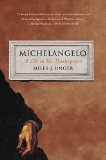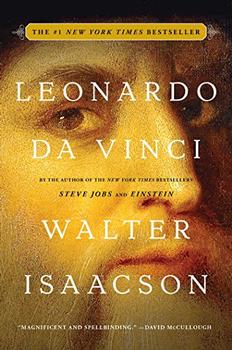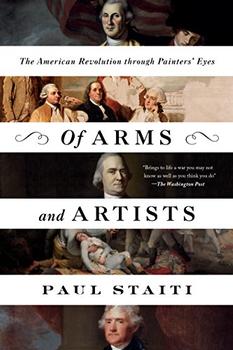Summary | Excerpt | Reviews | Beyond the book | Read-Alikes | Genres & Themes | Author Bio

Critics' Opinion:
Readers' Opinion:
First Published:
Jul 2014, 448 pages
Paperback:
Jul 2015, 448 pages
 Book Reviewed by:
Book Reviewed by:
Suzanne Reeder
Buy This Book
In Michelangelo: A Life in Six Masterpieces, Miles J. Unger examines the genius artist and his long and illustrious career. This meticulously researched book is equally insightful and entertaining, teeming with detailed accounts and rich descriptions that bring not only Michelangelo to vivid life but also the Renaissance era in which he lived, when "the princes of the Church" had the power to make or break an artist's career.
A former contributing writer for The New York Times and former Managing Editor of Art New England, Unger's work also has appeared in The Washington Post, The Boston Globe, and numerous other publications. He has authored three previous books, including Magnifico: The Brilliant Life and Violent Times of Lorenzo de'Medici and Machiavelli: A Biography.
Unger's narrative begins with the artist as a 73-year-old man who has just written a petulant note, in 1548, to his nephew. The letter offers no indication of mellowing with advanced age but instead reveals this lingering resentment: "While it is true that I have served three popes," Michelangelo writes, "that was only because I was forced to."
Not just in the last stage of his life but throughout his career, Michelangelo could be arrogant, ill-tempered, pretentious, and overbearing. He was easily threatened and jealous of those he considered rivals, notably Raphael and da Vinci. He was contentious with his powerful and demanding patrons—including popes and cardinals—who both tolerated and challenged his mammoth ego and ferocious ambition. He also was a devout Christian, kind to his workers who remained loyal to him, and devoted to his quarrelsome relatives who benefited from his financial largesse. From start to finish, Unger consistently and deftly navigates the complexity of this giant of sculpture, painting, and architecture who came from humble beginnings and "stubbornly, even pugnaciously...transformed both the practice of art and our conception of the artist's role in society."
Michelangelo di Lodovico di Buonarroti Simone was born in 1475 in the provincial village of Caprese, where his father, Lodovico, was serving a term as mayor. Lodovico was "both proud and poor," traits which left "an indelible mark" on Michelangelo, the second of five boys in the family. When he was less than a month old, the family returned to Lodovico's native city of Florence at the end of his term in office. Unger writes that "the first event of note" in Michelangelo's young life occurred when he was only six and his mother, Francesca, died. While this early bereavement has inspired much "forensic psychoanalysis," Unger contends the significant conflict with his father over the decision to become an artist was a more critical factor in Michelangelo's development. Unger cites the recordings of Ascanio Condivi—Michelangelo's friend and one of his earliest biographers—and informs us that in his youth, Michelangelo drew whenever he had the opportunity and sought out the company of painters. When he was discovered neglecting his studies in order to spend time in his studio, his father and uncles, who held art "in contempt, were much displeased, and often beat him severely for it."
The main reason for this contempt was due to the artist's profession and its "taint of manual labor." Unger notes that although the connection was dubious, young Michelangelo and his brothers were taught early on that they were descended from the counts of Canossa, perhaps the most famous dynasty in Tuscany. Though Lodovico's attempts at restoring the family's fortunes were halfhearted and he lacked the drive to succeed in business, he was obsessed with the dignity of the family name and remained determined not to further degrade the Buonarroti reputation, certainly not with a son who wanted to pursue a "socially suspect profession." Michelangelo eventually broke down his father's resistance by earning money at a successful art factory that produced panel paintings and frescoes in assembly line fashion, the kind of shop that ultimately was antithetical to Michelangelo's higher calling but nonetheless added to the family's coffer. (As Michelangelo became more successful, he frequently provided financial support for his father and other "feckless relatives.")
The book offers not only a fascinating portrait of Michelangelo but also a compelling history of Rome and Florence, as well as the six masterpieces (and other substantial works) that he created in these two cities: the Pietà, David, Creation, The Medici Tombs (New Sacristy), The Last Judgment, and St. Peter's Basilica. (For more on these masterpieces, see Beyond the Book.) Of the Pietà—Michelangelo's sculpture of Jesus and Mary—Unger writes that it is "probably the best loved of Michelangelo's works...The image of a mother grieving for her dead son is one that touches everyone on a visceral level."
For both art aficionados and general readers, Michelangelo will likely shed a new or more illuminative light on the artist who became a legend even before his death in 1564 at the age of 88. Over the years, Unger writes, Michelangelo has been "beatified and vilified...but whether he is viewed as an inspirational example of someone willing to defy convention or a monument so imposing as to block all possibility of forward progress, his life and his work changed the world."
![]() This review was originally published in The BookBrowse Review in August 2014, and has been updated for the
September 2015 edition.
Click here to go to this issue.
This review was originally published in The BookBrowse Review in August 2014, and has been updated for the
September 2015 edition.
Click here to go to this issue.

If you liked Michelangelo, try these:

by Walter Isaacson
Published 2018
He was history's most creative genius. What secrets can he teach us? The author of the acclaimed bestsellers Steve Jobs, Einstein, and Benjamin Franklin brings Leonardo da Vinci to life in this exciting new biography.

by Paul Staiti
Published 2017
A fascinating look at how the art world viewed the American Revolution, and how their work still effects the way we view those events today.





The Flower Sisters
by Michelle Collins Anderson
From the new Fannie Flagg of the Ozarks, a richly-woven story of family, forgiveness, and reinvention.

The House on Biscayne Bay
by Chanel Cleeton
As death stalks a gothic mansion in Miami, the lives of two women intertwine as the past and present collide.

The Funeral Cryer by Wenyan Lu
Debut novelist Wenyan Lu brings us this witty yet profound story about one woman's midlife reawakening in contemporary rural China.
Your guide toexceptional books
BookBrowse seeks out and recommends the best in contemporary fiction and nonfiction—books that not only engage and entertain but also deepen our understanding of ourselves and the world around us.